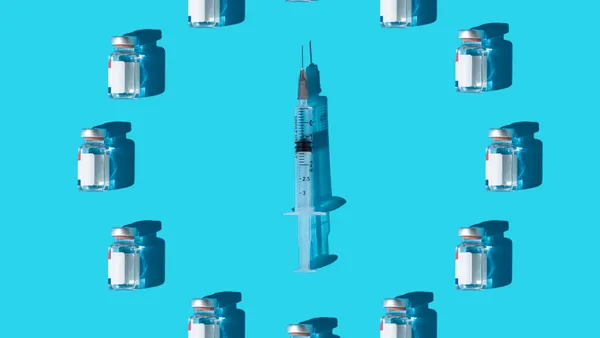All eyes were on Medicare this week as the agency took the first step toward implementing the drug pricing provisions laid out in the Inflation Reduction Act (IRA). But more storm clouds could be brewing for the industry on the legislative front as Democratic lawmakers push for additional changes to drug policy.
In a fact sheet announcing the first-ever Medicare pricing list on Tuesday, the Biden administration highlighted a proposal in the president’s 2024 budget to build upon the IRA by doubling the number of treatments subject to negotiation per year and shortening the timeframe for when a drug is eligible for negotiation to five years after launch.
So far, those measures have not been included in either the House or the Senate’s end-of-year appropriations packages. But Democrats in both chambers are pushing bills to increase the number of drugs included in negotiations from 20 to 50 a year starting in 2029 and expand Medicare pricing to the commercial market, among other measures.
Of course, the proposals are non-starters for pharma leaders and many Republicans who’ve argued that the current price protection period of nine and 13 years respectively for small molecule drugs and biologics is already too short.
Chilling effect
Those negotiation timetables are already limiting investment in small molecules, and additional reforms could restrict it even more, argued John Stanford, executive director of Incubate Coalition, a venture capital advocacy organization that counts biotech executives and investors among its advisory board members. Between ramping up manufacturing for a therapy and getting payers on board, it can take at least three or four years to market and reap rewards on a new drug, and peak sales usually fall between years nine and 13, he said.
"No one wants to be accused of rolling back drug pricing reform.”

John Stanford
Executive director, Incubate Coalition
For his part, Stanford is continuing to urge lawmakers on both sides of the aisle to extend the timeline for small molecule drugs. Progress is slow, but Stanford said he’s hopeful.
“In private conversations, we have seen Democrats express real concern over the small molecule penalty,” he said. “I think people agree there's a fundamental issue here, so we've got a good policy solution.”
The only problem is politics.
“No one wants to be accused of rolling back drug pricing reform,” particularly during an election year, he said. “What we're trying to tell Democrats is you can still be a strong supporter [of the IRA] … and it’s OK to say: ‘We're seeing consequences we don't want and we're going to make changes to fix them.’”
In the short term, though, there doesn’t appear to be much political momentum to reform the small molecule penalty. And while Democrats also have long-shot odds of passing their drug pricing reforms, the proposals hint at the parties’ priorities should they win back the chamber in 2024.
Impact of PBM reform
Another area where the industry may see reform sooner is in the operations of pharmacy benefit managers (PBMs).
Numerous congressional committees have advanced legislative packages aimed at altering how PBMs negotiate prices and Senate Majority Leader Chuck Schumer (D-N.Y.) expressed plans to prioritize passing those measures, along with others to extend Medicare’s $35 out-of-pocket insulin cap to the commercial market.
Those efforts aren’t directly related to drug pricing, but from an investor standpoint, Stanford said they could alleviate some pressure on the market.
“If we can put some transparency in that space, as well as pass those savings that are realized by PBMs through [to patients], we see a more attractive environment for investment,” he said. “We see PBM reform as a critical step to fixing what we consider a very broken healthcare payer system, and if we can fix that and get to a healthier environment, that's a release valve on some of the efforts in our view, mistakenly to only go after drug pricing as the woes of the healthcare industry.”












